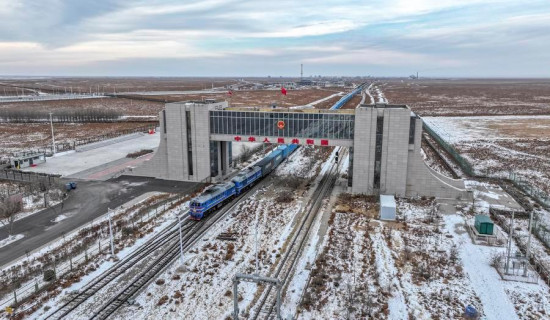- Wednesday, 24 December 2025
Call For Collective Nuke Disarmament
The bombardment of Hiroshima and Nagasaki did not merely aim to bring the raging World War II to an abrupt end but it also bore a hidden strategy to convince the world that a US-dominated world order was in the offing. The destruction worked well, for the time being. What followed was a race in developing similar technology, as top state priorities. By the 1960s, the Cold War between the US and the erstwhile Soviet Union had fueled an arms race, raising anxieties about the spread of nuclear weapons.
In 1957, the idea of a non-proliferation treaty gained traction within the United Nations. Ireland formally proposed a resolution in 1961. The Treaty on the Non-Proliferation of Nuclear Weapons (NPT) was signed in 1968 by the then major nuclear powers, namely the United States, the then Soviet Union (now Russia), and the United Kingdom and other 40 non-nuclear powers. China and France, both now recognised as nuclear weapon states, acceded to the treaty later in 1992. Four UN member states with nuclear capability have never signed the NPT: India, Israel, Pakistan, and North Korea (which withdrew after signing).
Commitment
Article VI of the NPT commits nuclear-weapon states to pursue and achieve nuclear disarmament in good faith. This could be seen as a commitment to reducing the threat these weapons pose. However, as the NPT doesn't explicitly state that nuclear weapon states will never use their weapons against non-nuclear weapon states, many non-nuclear weapon states believe the current system leaves them vulnerable. Although the NPT also allows non-nuclear weapon states access to peaceful nuclear technology, suggesting a benefit for joining the treaty, concerns that the recipient might be hideously developing a weapon are invariably present. Some countries blame the NPT auditors of espionage on the state secrets.
In course of time, as the influence of the USSR decreased, the Berlin Wall fell and East Germany was absorbed into West Germany. Americans were content that their main rival had lost its power, and tried to soothe the USSR that the NATO would not expand beyond eastern Germany. During a meeting on 9 February 1990, the US secretary of state James Baker gave this assurance to the then Soviet leader Mikhail Gorbachev. The same promise was repeated by NATO’s secretary general in a speech on May 17 that same year in Brussels. Soon on 26 December that year followed the collapse of the USSR, to
everybody’s surprise.
The US and the USSR fought proxy wars but avoided direct fights. The US-led economic sanctions, internal conflicts, poor economic progress and other various factors led to the disintegration of the USSR, whereupon Russia inherited the nuclear weapons. The collapse of the Soviets resulted in the US-dominated unipolar world. Russians were humiliated to the point where NATO began to absorb its former allies and now-independent former Soviet Republics. To make the story short, Russians felt betrayed by the US and NATO. The Russians considered that NATO membership to Ukraine crossed a red line. This resulted in Ukraine war, where the US is fighting a proxy war against the Russians.
Ukraine has become a battlefield. Whether the Russians win or lose, Ukrainians have suffered irreparable damages, resulting in the death of over 70 thousand soldiers, internal displacement of over 14 million and over 6 million refugees abroad. Certainly, many have lost their parents, spouses, relatives and friends. The World Bank estimates direct economic damage in Ukraine to be around $152 billion since the war broke. The true cost of the war will likely continue to rise as the conflict goes on. Consider indirect losses and the losses on Russian side, and war proves more damaging.
In first place, compared to US and other leading economies, Russian economy is much smaller. Russia is certainly under tremendous economic and technological pressure in fighting the war supported by Americans and its allies. It is in this context that Russians have sought alliance with countries like Belarus, North Korea, China, Cuba and Iran. Nuclear power North Korea has declared to support Russia. What is more alarming is the Russian threat of using nuclear weapon if it feels the US-led forces cross the limits. While one is free to remain optimistic, there is no assurance that the threats will not materialise.
US-China cold war
Besides, war has erupted in the West Asia, where there are two suspected nuclear powers Israel and Iran, confronting each other. East Asia and South China Sea have seen verbal exchanges and navy exercises, aimed at scaring each other. As Dmitri Alperovitch, the US national security expert, a co-founder of CrowdStrike and the company's former chief technology officer, says, the nuclear powers China and the US are in a cold war over Taiwan. While the India-China borders are relatively quiet, Nepal lies between the two nuclear powers, which have fought brief wars in the past. India-Pakistan nuclear fighting over Kashmir, a land not far from Nepal, is not impossible. We have many a reason to worry.
When a country has a weapon of mass destruction, and faces a war it knows it cannot win with conventional ways, no one can be assured that it won’t use last option. Collective disarmament is the only way to a safer world, harmony, sustainable development and just global order. The globe, natural ecosystem and humanity are under big threats, both natural and manmade. To avoid disaster, all concerned stakeholders, especially the ones with nuclear weapons, need to act prudently, now, and forever.
(Regmi is a professor at Tribhuvan University and a researcher at Charhar Institute, China.)

















